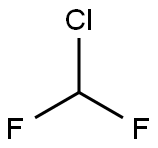1-Chloro anthraquinone
Synonym(s):1-Chloroanthraquinone
- CAS NO.:82-44-0
- Empirical Formula: C14H7ClO2
- Molecular Weight: 242.66
- MDL number: MFCD00001189
- EINECS: 201-421-4
- SAFETY DATA SHEET (SDS)
- Update Date: 2024-12-18 14:08:57

What is 1-Chloro anthraquinone?
Chemical properties
light yellow to yellow powder or chunks
The Uses of 1-Chloro anthraquinone
1-Chloroanthraquinone is an intermediate for manufacturing vat dyes such as CI Vat Brown 1.
The Uses of 1-Chloro anthraquinone
1-Chloroanthraquinone is used to characterize anthraquinone intercalators as carrier molecules for second-generation platinum anticancer drugs.
Safety Profile
Poison by intravenous route. An eye irritant. When heated to decomposition it emits very toxic fumes of Cland NOx.
Properties of 1-Chloro anthraquinone
| Melting point: | 159-160 °C (lit.) |
| Boiling point: | 345.65°C (rough estimate) |
| Density | 1.2377 (rough estimate) |
| refractive index | 1.5380 (estimate) |
| storage temp. | Store below +30°C. |
| solubility | Soluble in hot toluene. (almost transparency) |
| form | Powder or Chunks |
| color | Light yellow to yellow |
| BRN | 1912752 |
| CAS DataBase Reference | 82-44-0(CAS DataBase Reference) |
| NIST Chemistry Reference | 9,10-Anthracenedione, 1-chloro-(82-44-0) |
| EPA Substance Registry System | 1-Chloroanthraquinone (82-44-0) |
Safety information for 1-Chloro anthraquinone
| Signal word | Warning |
| Pictogram(s) |
 Exclamation Mark Irritant GHS07 |
| GHS Hazard Statements |
H315:Skin corrosion/irritation H319:Serious eye damage/eye irritation H320:Serious eye damage/eye irritation H335:Specific target organ toxicity, single exposure;Respiratory tract irritation H412:Hazardous to the aquatic environment, long-term hazard |
| Precautionary Statement Codes |
P261:Avoid breathing dust/fume/gas/mist/vapours/spray. P264:Wash hands thoroughly after handling. P264:Wash skin thouroughly after handling. P273:Avoid release to the environment. P304+P340:IF INHALED: Remove victim to fresh air and Keep at rest in a position comfortable for breathing. P305+P351+P338:IF IN EYES: Rinse cautiously with water for several minutes. Remove contact lenses, if present and easy to do. Continuerinsing. P405:Store locked up. P501:Dispose of contents/container to..… |
Computed Descriptors for 1-Chloro anthraquinone
1-Chloro anthraquinone manufacturer
Pragna Group
1Y
Phone:+919913014035
Whatsapp: +91-9913014035
product: 82-44-0 1-Chloroanthraquinone 98%
New Products
(S)-3-Aminobutanenitrile hydrochloride 4-Methylphenylacetic acid N-Boc-D-alaninol N-BOC-D/L-ALANINOL Tert-butyl bis(2-chloroethyl)carbamate 3-Morpholino-1-(4-nitrophenyl)-5,6-dihydropyridin- 2(1H)-one Furan-2,5-Dicarboxylic Acid Tropic acid 1-Bromo-3,5-Di-Tert-Butylbenzene S-2-CHLORO PROPIONIC ACID ETHYL ISOCYANOACETATE 2-Bromo-1,3-Bis(Dimethylamino)Trimethinium Hexafluorophosphate 4-IODO BENZOIC ACID 3-NITRO-2-METHYL ANILINE 1-(2,4-DICHLOROPHENYL) ETHANAMINE (2-Hydroxyphenyl)acetonitrile 4-Bromopyrazole 2-(Cyanocyclohexyl)acetic acid 4-methoxy-3,5-dinitropyridine 1-(4-(aminomethyl)benzyl)urea hydrochloride 2-aminopropyl benzoate hydrochloride diethyl 2-(2-((tertbutoxycarbonyl)amino) ethyl)malonate tert-butyl 4- (ureidomethyl)benzylcarbamate Ethyl-2-chloro((4-methoxyphenyl)hydrazono)acetateRelated products of tetrahydrofuran








You may like
-
 82-44-0 1-Chloroanthraquinone 98%View Details
82-44-0 1-Chloroanthraquinone 98%View Details
82-44-0 -
 1-Chloroanthraquinone, 98% CAS 82-44-0View Details
1-Chloroanthraquinone, 98% CAS 82-44-0View Details
82-44-0 -
 1-Chloroanthraquinone, 98% CAS 82-44-0View Details
1-Chloroanthraquinone, 98% CAS 82-44-0View Details
82-44-0 -
 1-Chloroanthraquinone CAS 82-44-0View Details
1-Chloroanthraquinone CAS 82-44-0View Details
82-44-0 -
 1-Chloroanthraquinone CAS 82-44-0View Details
1-Chloroanthraquinone CAS 82-44-0View Details
82-44-0 -
 1975-50-4 98%View Details
1975-50-4 98%View Details
1975-50-4 -
 14714-50-2 (2-Hydroxyphenyl)acetonitrile 98+View Details
14714-50-2 (2-Hydroxyphenyl)acetonitrile 98+View Details
14714-50-2 -
 118753-70-1 98+View Details
118753-70-1 98+View Details
118753-70-1
Statement: All products displayed on this website are only used for non medical purposes such as industrial applications or scientific research, and cannot be used for clinical diagnosis or treatment of humans or animals. They are not medicinal or edible.